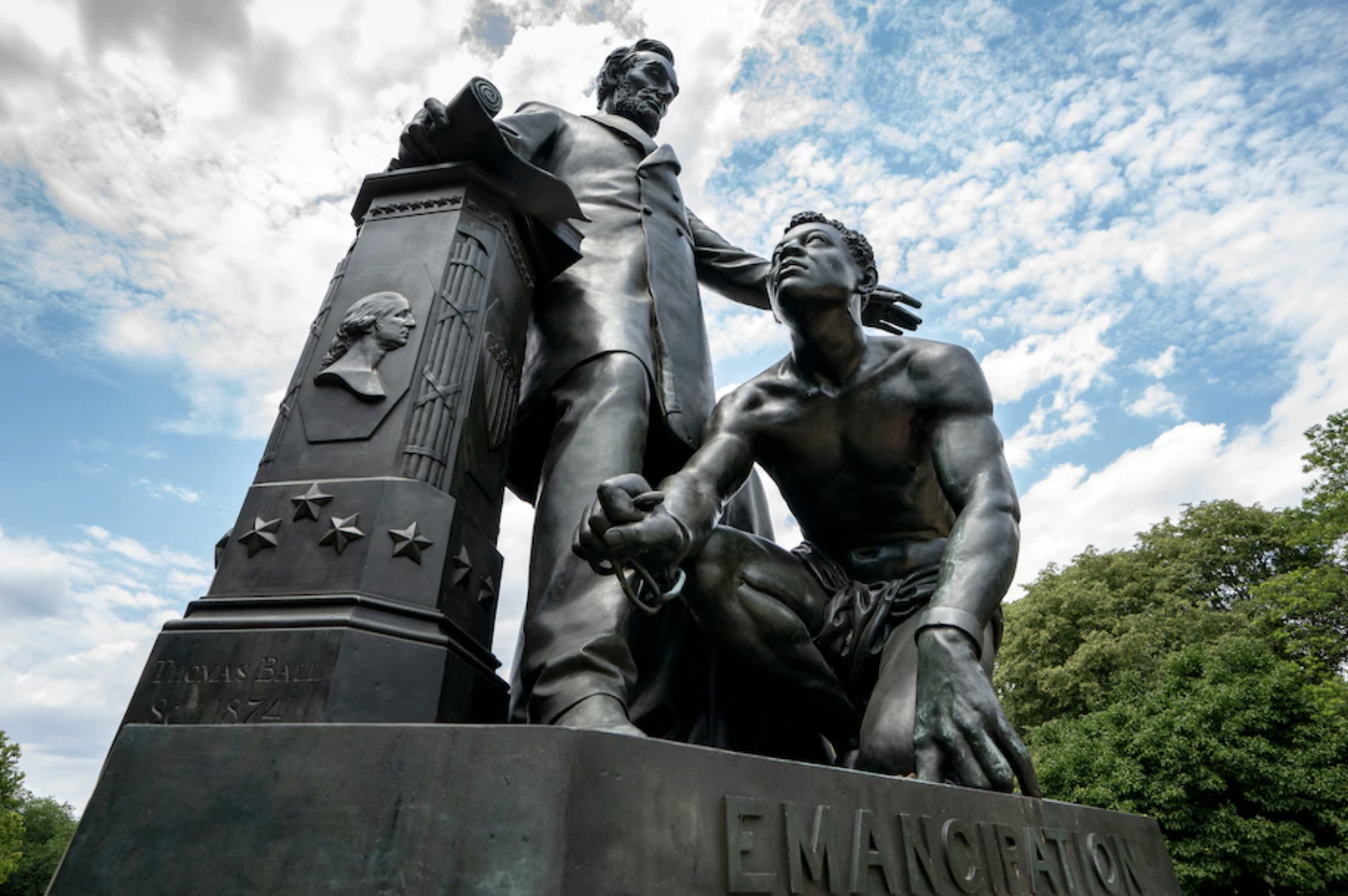By David W. Blight
June 25, 2020
The Freedmen’s Memorial in Washington is not a Confederate monument. It famously exhibits a standing Abraham Lincoln seemingly giving freedom to a kneeling black man naked from the waist up, whose chains are being broken. It was and is a racist image. This is hardly the monument our culture would create today as a memorial of emancipation. But none of us can ultimately have our history or memory pure. Memory is always about the politics of the present, but the righteous present is not always right.
Do not tear down this monument. I fully understand that protests are not forums for complexity; current demonstrations are the results of justifiable passion and outrage. It is reasonable to clear our landscape of public commemoration of the failed, four-year slaveholders’ rebellion to sustain white supremacy known as the Confederacy, even if it doesn’t erase our history. But the Freedmen’s Memorial is another matter. For those contemplating the elimination of this monument, including D.C.’s delegate to Congress, Eleanor Holmes Norton (D), please consider the people who created it and what it meant for their lives in a century not our own. We ought not try to purify their past and present for our needs.
A huge parade involving nearly every black organization in the city preceded the dedication of the monument on April 14, 1876. The procession included cornet bands, marching drum corps, youth clubs in colorful uniforms and fraternal orders. Horse-drawn carriages transported master of ceremonies and Howard University law school dean, John Mercer Langston, and the orator of the day, Frederick Douglass, a resident of that neighborhood. Representatives of the entire U.S. government sat in the front rows at the ceremony; the occasion had been declared a federal holiday. President Ulysses S. Grant, members of his Cabinet, members of the House and Senate and justices of the Supreme Court all attended.
The $20,000 used to build the monument had been raised among black Americans, most of them former slaves. A former slave woman, Charlotte Scott, had donated the first $5. The sculptor, Thomas Ball, lived and worked in Italy. The model for the kneeling slave, Archer Alexander — a former slave — was photographed numerous times and had his pictures sent to Ball. Ball believed he depicted Alexander as an “agent in his own resistance,” an assumption of course roundly debated to this day.
A young black poet from D.C., Cordelia Ray, recited an original poem, “Lincoln.” Grant, who did not speak, pulled the cords and unveiled the statue. Douglass then took the podium and delivered one of the greatest speeches of his life.
No African American speaker had ever faced this kind of captive audience of the full government, and none would do so again until Barack Obama’s inauguration as president in 2009. Douglass constructed memories of Lincoln in two distinctive ways. With blunt honesty, Douglass announced that Lincoln “was not . . . either our man or our model. In his interests, in his associations, in his habits of thought, and in his prejudices, he was a white man . . . the white man’s president.” He directly chastised Lincoln’s early advocacy to remove blacks from the country as a solution after emancipation. In the most lasting words of the speech, Douglass said: “My white fellow-citizens . . . you are the children of Abraham Lincoln. We are at best only his stepchildren; children by adoption, children by forces of circumstances and necessity.”
Then the tone and purpose of the speech shifted. Though Lincoln had “tarried long in the mountain,” he did arrive at emancipation. “The hour and the man . . . had somehow met.” Douglass employed a refrain several times: “Under his rule,” and “in due time.” Lincoln had sought the timing of his own in relation to events, and Douglass acknowledged that black freedom could only have come as it did — in war, by presidential decree and by the volition of black people themselves. Above all, the orator turned his address into a dire warning to his illustrious audience that Reconstruction was failing, indeed being lost in the South. They had little time to act to save the great results of the war. Douglass brilliantly recruited Lincoln’s memory to the cause of black equality and rights.
Rather than take down this monument to Lincoln and emancipation, create a commission that will engage new artists to represent the story of black freedom from one generation to the next. Let today’s imaginations take flight. Perhaps commission a statue of Douglass himself delivering this magnificent speech. So much new learning can take place by the presence of both past and present. As a nation, let’s replace a landscape strewn with Confederate symbols with memorialization of emancipation. Tearing down the Freedmen’s Memorial would be a terrible start for that epic process.
Article in The Washington Post: https://www.washingtonpost.com/opinions/2020/06/25/yes-freedmens-memorial-uses-racist-imagery-dont-tear-it-down/
